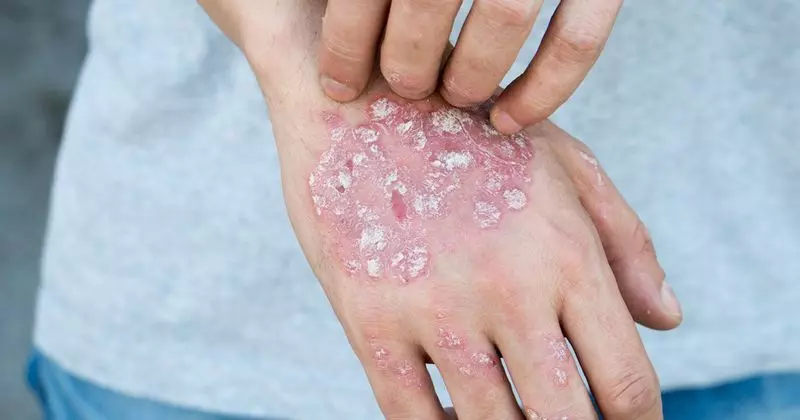Guselkumab tied with early improvement in psoriasis associated arthritis

Guselkumab associated with early improvement of joints and reduced progression of psoriatic arthritis suggests a new study published in the Clinical Rheumatology.
Assess relationship between earlier clinical improvement and radiographic progression (RP) over 2 years in guselkumab-treated patients with active psoriatic arthritis (PsA).
Post hoc analyses combined data from DISCOVER-2 biologic-naïve adults with active PsA randomized to either guselkumab 100 mg every 4 weeks (Q4W) or guselkumab at W0, W4, then Q8W. Correlations (Spearman’s coefficient) between baseline disease parameters and total PsA-modified van der Heijde-Sharp (vdH-S) score were examined. Repeated-measures mixed models, adjusted for known RP risk factors, assessed the relationship between Disease Activity Index in PsA (DAPSA) improvement, DAPSA improvement exceeding the median or the minimal clinically important difference (MCID), or DAPSA low disease activity (LDA) at W8 and RP rate, assessed by change from baseline in vdH-S score through W100.
Results
Baseline age, PsA duration, CRP level, and swollen joint count, but not psoriasis duration/severity, weakly correlated with baseline vdH-S score. Elevated baseline CRP (parameter estimate [β] = 0.17–0.18, p < 0.03) and vdH-S score (β = 0.02, p < 0.0001) significantly associated with greater RP through W100. Greater improvement in DAPSA (β = -0.03, p = 0.0096), achievement of DAPSA improvement > median (least squares mean [LSM] difference: -0.66, p = 0.0405) or > MCID (-0.67, p = 0.0610), or DAPSA LDA (-1.44, p = 0.0151) by W8 with guselkumab significantly associated with less RP through W100. The effect of W8 DAPSA LDA on future RP was strengthened over time among achievers vs. non-achievers (LSM difference enhanced from -1.05 [p = 0.0267] at W52 to -1.84 [p = 0.0154] at W100).
In guselkumab-treated patients with active PsA, earlier improvement in joint symptoms significantly associated with lower RP rates through 2 years, indicating blockade of the IL-23 pathway may modify long-term disease course and prevent further joint damage.
Reference:
Mease, P.J., Gottlieb, A.B., Ogdie, A. et al. Earlier clinical response predicts low rates of radiographic progression in biologic-naïve patients with active psoriatic arthritis receiving guselkumab treatment. Clin Rheumatol (2023). https://doi.org/10.1007/s10067-023-06745-y
Keywords:
Guselkumab, associated, early, improvement, joints, reduced, progression ,psoriatic,arthritis, Mease, P.J., Gottlieb, A.B., Ogdie, Clinical Rheumatology



